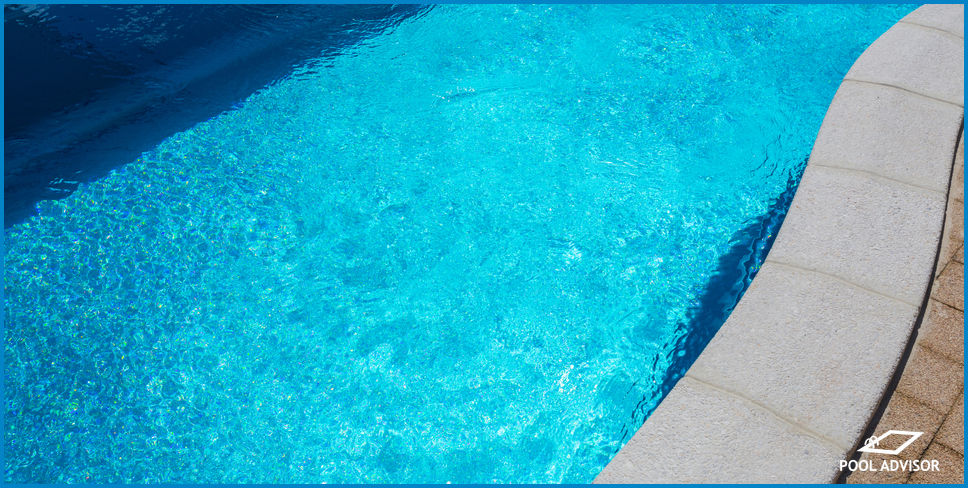
Pool ORP Level - What Is It? How Do I Raise It?
The ORP level of your pool is a somewhat complex concept that refers to the ability of your pool’s chemistry to perform oxidation on active microbes and sanitise your water.
Although ORP can be measured in all pools, it is not very common or necessary to measure it in home pools.
In this article, we will discuss what a pool ORP level is, what the ORP level should be in a pool, and how to raise the ORP level in your pool.
What Is A Pool ORP Level?
ORP stands for oxidation reduction potential, and it is the oxidising capacity of your pool’s water. ORP refers to the ability of your pool’s water to oxidise active contaminants. Essentially, it is a measurement of the capacity of your pool’s water to perform sanitation.
While monitoring the free chlorine level is how most residential pool owners keep track of the safety of their pool, the ability of chlorine to oxidise contaminants in your pool can be affected by other elements of water chemistry, so it’s an imprecise measure of pool safety.
Essentially, the ORP tells us how well our pool is sanitised (and therefore how safe it is), without relying on the free chlorine reading alone.
More Detail
While discussions of ORP have been standard in the realm of commercial swimming pools for many years, many home pool owners are wanting to know more about the exact chemical processes that are occurring in their pools.
To understand ORP, you must first learn about HOCl and OCI-.
There are two chemical components of free chlorine molecules: hypochlorous acid (HOCl) and hypochlorite ion (OCI-). Of them, the hypochlorite ion is slower working, while hypochlorous acid has a higher oxidation potential, and is much more effective at sanitation.
Both of these components are present in your pool, but the ratio in which they are present is dependent on the pH levels of your water. At higher pH levels, OCI- begins to vastly outnumber HOCl, which reduces the ORP of your pool.
Bear in mind that in outdoor pools with plenty of cyanuric acid, the relationship between pH and ORP is less significant.
Because your pool’s ORP level is a measure of how effectively it can sanitise active contaminants like bacteria and algae, it is important to maintain as high of an ORP as possible.
Other factors can also reduce your pool’s ORP, such as warm water temperatures or a high amount of chloramines.
What Is A Good ORP Level For A Pool?
A pool’s oxidation reduction potential is measured in millivolts or mV. The ideal voltage level for your pool ranges from 650-750mV, with many sources suggesting that 700-720mV is the most adequate range for sanitation.
How To Measure ORP Levels
ORP is measured using an electrochemical test, similar to electrical meters for pH or TDS. These tests emit electrical pulses between probes and measure the changes in these electrical pulses in order to determine the ORP of your pool’s water.
ORP test kits can be fairly expensive, which is why they have previously been more commonly used among commercial grade swimming pools. Currently, the cheapest models of ORP meter start at $80 and go up from there.
How To Raise ORP Levels In A Pool
Maintain Adequate Chlorine Levels
Adequate levels of free chlorine in a pool range from 2-4 ppm. In order to maintain an adequate ORP, first ensure that your free chlorine levels are maintained within this range.
Low free chlorine in a pool will reduce your ORP significantly. If you have low free chlorine, check out our guide on how to raise free chlorine in your pool.
Lower pH Levels
High pH in a pool is associated with chlorine inefficiency. This occurs when the ratio of OCI- to HOCl is too high, dramatically reducing its ORP.
As mentioned earlier, this is more the case for indoor pools, which don’t use cyanuric acid as a stabiliser.
In order to lower pH in your pool, you can use either dry acid or hydrochloric acid.
If you regularly have high pH in your pool, you may have problems with your total alkalinity. This calculator can help you balance your pool’s total alkalinity, which will help you buffer against frequent changes in pH in the future.
Use A Non-Chlorine Shock
If you need to raise the ORP of your pool further, consider using a non-chlorine shock product, such as Shock-N-Swim. Although the effects are short-lived, non-chlorine shock products contain fast-acting oxidizers, creating a sharp increase in the ORP of your pool for a brief amount of time.
Gas Injection Systems
Although these are much more common in commercial grade swimming pools, another way to raise the ORP of your pool is by using a gas injection system as your primary method of sanitation.
These systems, such as ozone injection systems or advanced oxidation process (AOP) systems rely on using other sanitizers in your pool's water besides chlorine, making them the closest option to a chlorine-free pool available.
With these systems, the amount of chlorine maintained in pool water is similar to that of tap water in metropolitan areas, while other oxidising elements perform most of the sanitation.
Conclusion
The oxidation reduction potential of your pool can seem like a complicated term, but it simply refers to the overall ability of your pool’s chemicals to perform sanitation. By measuring the ORP of pool water, you can learn more about the effectiveness of your chlorine at its current levels.
Do you have any questions about the ORP of your pool? Get in touch with us in the comments, we’d love to help!

Louis
A chemical engineer by trade, Louis is committed to debunking myths in the pool industry by explaining the underlying chemistry and making it accessible to all.
